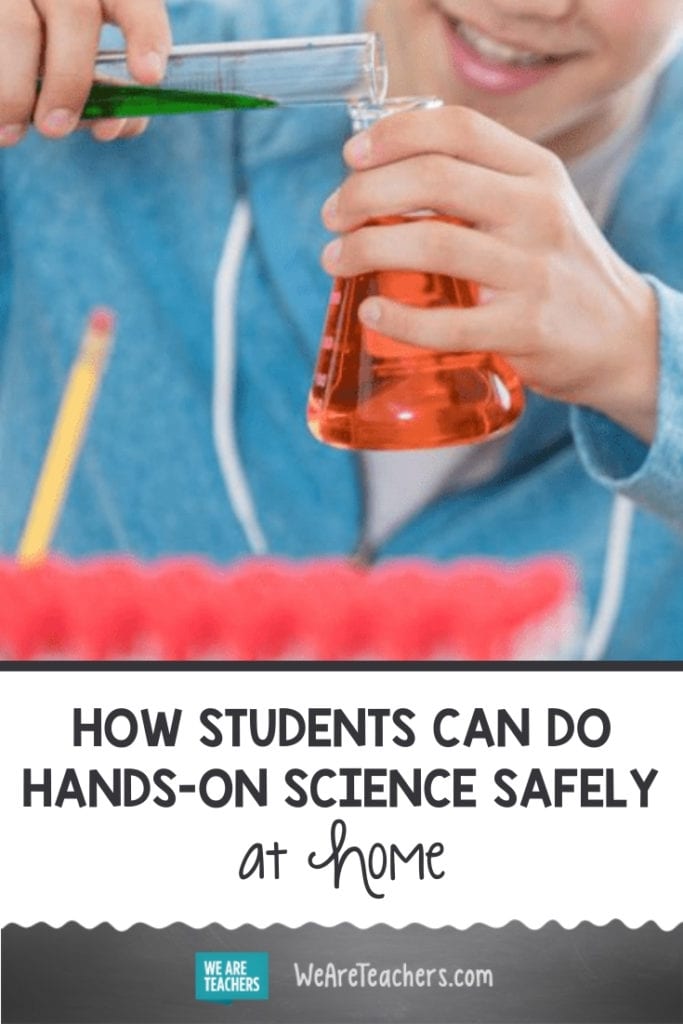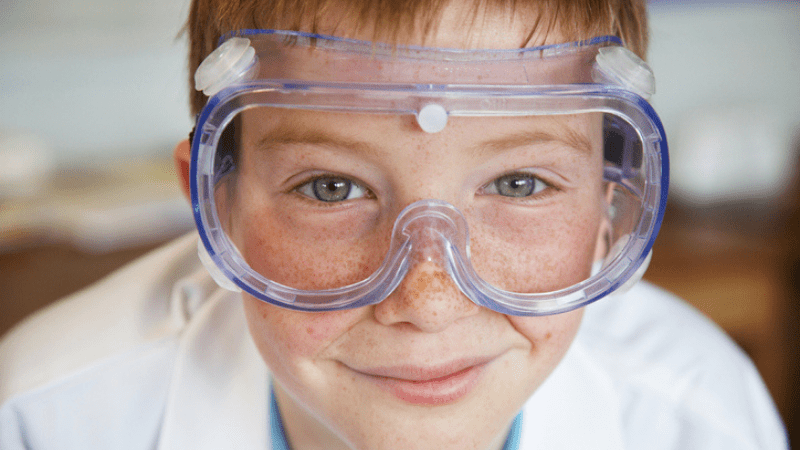For science teachers, one of the biggest challenges right now is planning lessons that engage students in blended and remote learning environments. When we consider hands on science, it begs the question: How do we make it safe for students to do science experiments at home?
First thing, of course, is to use only every-day household items, not dangerous chemicals. We looked to experienced science teachers for the following lab safety tips and advice to ensure science experiments are safe, equitable, and fun, whether your students are learning at school or home.
1. Use materials that are safe for and accessible to all students.
Students should only experiment with safe household items. But don’t assume that all students have equal access to these items.
Last spring, Stephanie Conley, a science teacher at 7 Pillars Career Academy in Forest Park, Georgia, put together science kits for her students to use at home. She included materials her students needed to safely and equitably complete their science labs.
If you’re looking for a fast and easy way to build custom science kits for your students to use at home, check out Ward’s Quick Kits.
2. Ensure students have adult supervision.
Even if we provide all the tools (safety goggles, aprons, gloves, etc.), many adults are working, so we can’t assume that someone is available at home to supervise the experiment.
If you are teaching in a hybrid model, try to plan labs when students are in school. If science labs need to happen at home, survey parents and caregivers to ensure adult supervision is possible before assigning the lab.
3. Get feedback from a colleague to ensure clarity.
When students learn at home, it’s especially important to explicitly communicate lab procedures, even if the action seems obvious. For example, “First, put on your vinyl aprons, goggles, and disposable gloves.”
Andrew West, a teacher at the Lower Kuskokwim School District in Napakiak, Alaska, recommends drafting lab directions and then sharing them with a colleague that doesn’t teach science before giving them to students. Your colleague can provide feedback on how to make directions clearer. Or they can confirm that yours are ready to pass on to students.
4. Provide instructions in multiple formats.
Make sure to communicate your lab instructions in various formats, and send them to parents and caregivers, as well as students.
Veteran science teacher and instructional coach, Dr. Jessica Anderson, recommends, “Put those safety precautions in multiple places. Share them in a video, put them on the assignment, and send a note to parents as well.”
5. Film yourself doing the experiment.
When students can’t safely do a lab at home, watching a video may be the next best option.
Middle school science teacher Jada Taylor from Pleasant Hill, Oregon, filmed herself going through each experiment in her curriculum last spring. She asked students to watch the video and pause throughout to record their hypothesis, observations, and possible explanations. At the end of her video, she discussed the outcome, and students wrote their conclusion.
6. Have students sign a lab safety agreement.
Accidents are more likely to happen if students are working alone or designing their own experiments, so students must understand that they should only conduct approved experiments.
Because teachers and schools are liable for students’ safety when doing science labs, safety agreements are a good idea, even when experiments will be conducted at home. Before starting, parents, and caregivers should all sign a document stating that they read and understand the precautions and agree to follow the rules. Get a free lab safety contract here.
7. Connect science to current events.
It’s a best practice to connect what’s happening in our world to the curriculum. Because of COVID-19, it’s important to teach students how germs are spread. This helps them understand the importance of handwashing, wearing masks, and other safety measures to prevent spreading the virus.
This Glo-Germ Antiseptic Techniques Kit, for example, teaches students proper cleaning techniques in a fun and interactive way.
8. Take the guesswork out of ordering supplies.
Lab safety is always a priority, but this year with COVID-19 and elevated health and safety concerns in schools, it is more important than ever. Use this PPE & Sanitization Checklist created by Ward’s Science to take the guesswork out of deciding on the right supplies.
9. Save chemicals for the classroom if possible.
If students are working directly with chemicals, it’s safest to do it when they are in the classroom. Equip them with the gear they need to handle them safely. For an easy solution, check out Ward’s Safety Supply Kit, which includes a lab coat, gloves, and safety goggles.
If you’re teaching in the classroom, post signs like these, which remind students of safety procedures and expectations throughout the lab. For remote learners, provide handouts with similar information along with each at-home lab assignment.
Finally, make sure you have a plan and supplies for cleaning up chemicals if there is a spill. This Caustic Spill Clean Up Kit is a good option.
Need safety supplies for blended or remote learning?
Whether your students are learning at school or home, lab safety is still a top priority. From basics like goggles to custom at-home lab kits, Ward’s Science has all the supplies and resources you need in one place. So you can focus on what you do best: teaching science.



